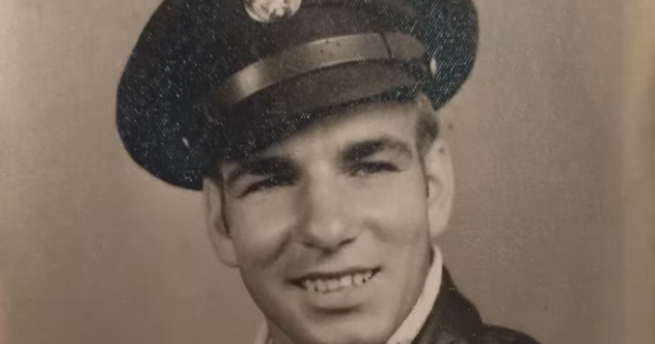Officials have announced that U.S. Army Air Forces Corporal Glenn H. Hodak, a World War II airman captured by Japanese forces and subsequently killed in a prison fire, has finally been accounted for after extensive forensic investigations. Hodak, who was part of the prestigious 93rd Bombardment Squadron, was shot down over Tokyo in March 1945. His remains were identified using advanced forensic techniques by the Defense POW/MIA Accounting Agency (DPAA), concluding a decades-long effort to bring closure to his family.
| Article Subheadings |
|---|
| 1) Background on Corporal Glenn H. Hodak |
| 2) Details of the Capture and Prison Fire |
| 3) Efforts in Identifying Remains |
| 4) DPAA’s Tokyo Prison Fire Project |
| 5) Significance for Family and Commemoration |
Background on Corporal Glenn H. Hodak
Corporal Glenn H. Hodak, hailing from Cambridge Springs, Pennsylvania, served as a gunner in the 93rd Bombardment Squadron, part of the larger 19th Bombardment Group during World War II. His unit was integral in executing bombing missions over Japan, particularly using the B-29 “Superfortress,” a strategically vital aircraft capable of carrying vast payloads and traversing long distances. These capabilities made the B-29 a critical asset for the U.S. military in the Pacific Theater. Tragically, on a mission to Tokyo in March 1945, Hodak’s aircraft was shot down, marking the beginning of his harrowing journey.
Details of the Capture and Prison Fire
Following the downing of his plane, Glenn H. Hodak was initially classified as missing in action. Subsequent investigations revealed that he had been captured by Japanese forces and confined in the Tokyo Military Prison. During this tumultuous period in late May 1945, intensive Allied bombardment of Tokyo resulted in catastrophic destruction, with numerous buildings engulfed in flames. The Tokyo Military Prison was one of the structures that did not withstand the assault; it was ravaged by the fires that engulfed parts of the city. Tragically, none of the prisoners, including Hodak, survived the inferno, and they were buried in a mass grave.
Efforts in Identifying Remains
After the end of World War II, the American Graves Registration Service undertook efforts to recover remains from the Tokyo Military Prison site, leading to the disinterment of 65 sets of remains in early 1946. While 25 of these sets were identified, the vast majority remained nameless and were ultimately interred as Unknowns at the Manila American Cemetery and Memorial in the Philippines. In 2022, these remains were once again disinterred and brought to the laboratory for advanced forensic analysis. The Defense POW/MIA Accounting Agency employed various techniques, including dental and anthropological analyses, alongside circumstantial evidence to identify the individuals who had perished in the fire. The use of DNA sequencing was also instrumental in the identification process.
DPAA’s Tokyo Prison Fire Project
In 2024, the DPAA initiated the Tokyo Prison Fire Project to systematically address the forensic challenges of identifying remains from this historic tragedy. The agency described the project as facing “considerable forensic challenges due to the burned and fragmentary condition of the remains and extreme commingling.” Through meticulous work, scientists and forensic experts have made remarkable progress, accounting for two servicemen lost in the fire, including Glenn H. Hodak. This project aims not only to identify and honor the deceased but also to provide closure to their surviving relatives.
Significance for Family and Commemoration
The identification of Glenn H. Hodak’s remains marks a significant moment for his family, who have been informed of this development by the DPAA. This successful identification underscores the agency’s commitment to accounting for all service members who have gone missing in action and provides an important psychological and emotional closure for families who have awaited news for decades. Plans are underway to bury Hodak in May in Spring Creek, Pennsylvania, allowing family, friends, and the community to honor his memory and sacrifice alongside others who served during that tumultuous time in history. These commemorations serve as a reminder of the impacts of war and the importance of remembering those who have fought for their country.
| No. | Key Points |
|---|---|
| 1 | Corporal Glenn H. Hodak was part of the 93rd Bombardment Squadron during World War II. |
| 2 | Hodak was captured by Japanese forces after his plane was shot down over Tokyo in March 1945. |
| 3 | The Tokyo Military Prison was destroyed by a fire resulting from U.S. bombardments, leading to the deaths of all its prisoners. |
| 4 | DPAA scientists utilized advanced techniques including DNA sequencing to identify Hodak’s remains. |
| 5 | A burial for Hodak is planned for May in Spring Creek, Pennsylvania, providing closure to his family. |
Summary
The accounting of Corporal Glenn H. Hodak serves as a profound reminder of the sacrifices made by servicemen during World War II. His identification highlights the ongoing efforts of the Defense POW/MIA Accounting Agency to bring closure to families affected by the war and underscores the historical significance of events that shaped international relations. As Hodak’s family prepares for his burial, the story of his courage and the challenges faced in identifying the fallen continues to resonate within the community and the nation.
Frequently Asked Questions
Question: Who was Glenn H. Hodak?
Glenn H. Hodak was a Corporal in the U.S. Army Air Forces during World War II, serving as a gunner in the 93rd Bombardment Squadron, and was captured by Japanese forces after his aircraft was shot down.
Question: How did Corporal Hodak die?
He perished in a fire that consumed the Tokyo Military Prison, where he was held after being captured. All prisoners in the facility at the time of the fire did not survive.
Question: What methods were used to identify Hodak’s remains?
The Defense POW/MIA Accounting Agency employed various techniques, including dental and anthropological analysis, circumstantial evidence, and DNA sequencing to identify the remains of Glenn H. Hodak.


